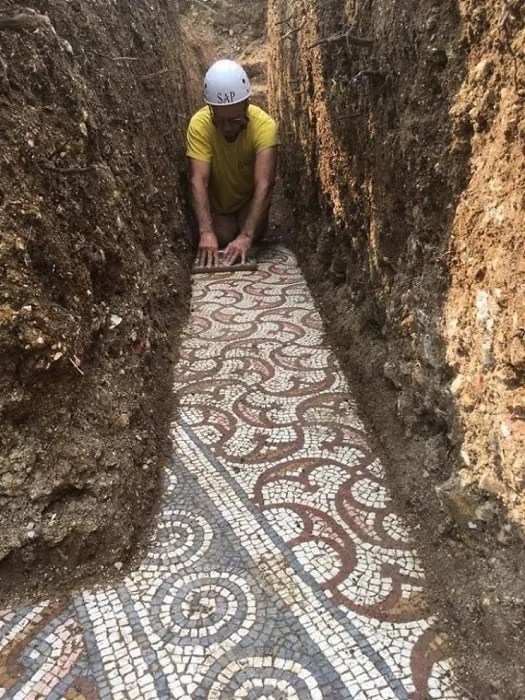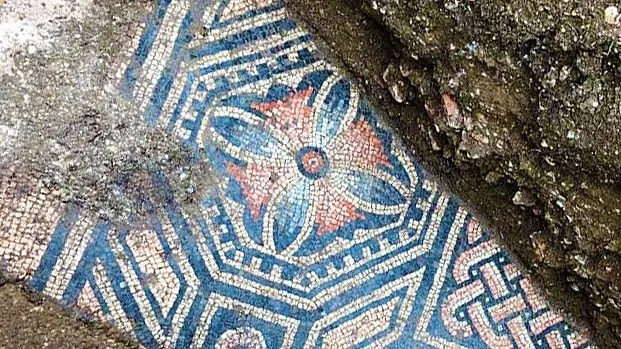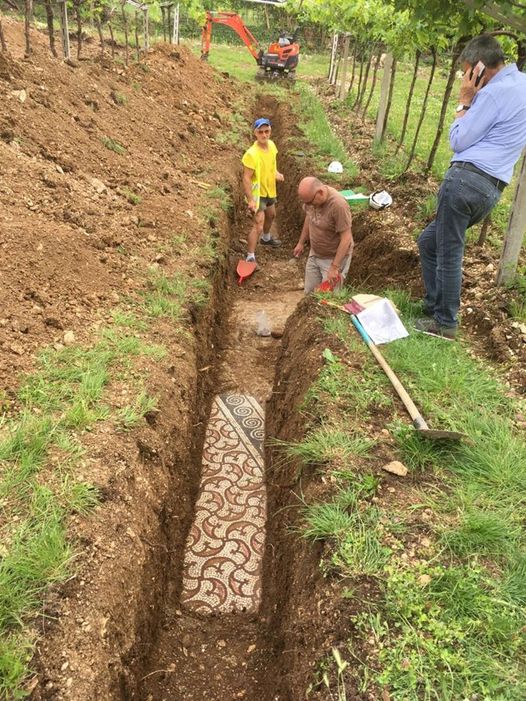
For nearly a century, archaeologists have been trying to uncover the ruins of an ancient Italian villa. Recently, their hard work paid off with an unexpected find: a gorgeous Roman mosaic hidden under a farm in the hills above Negrar di Valpolicella, in northeastern Italy.
This beautifully crafted floor is believed to be part of the same villa found years ago. The mosaic features a variety of geometric designs using tesserae made from marble and glass, skillfully arranged into intricate patterns. Beneath the dazzling mosaic, several layers of mortar indicate that the floor has been repaired many times over the years.
This discovery holds great significance for both archaeologists and the local community. It offers valuable insights into the history and culture of this Italian region and serves as a testament to the power of perseverance and dedication. Many hope it will inspire future generations to continue the search for such historical gems.

Experts are now exploring the safest way to excavate this stunning mosaic, thought to date back to the third century AD. Their goal is to preserve its intricate design without causing any damage.
More than 100 years ago, researchers discovered this important Roman mosaic under a farm near Verona, Italy. They unearthed pieces of the floor and the base of the Roman villa, offering a glimpse into a bygone era.

With careful excavation and preservation, we can learn more about how people lived in ancient times, gaining valuable information about their culture and lifestyle.
Additionally, this mosaic may reveal details about the artistic skills of the past. Further study could uncover more secrets about this fascinating period, enriching our understanding of Roman history.

Last summer, a new excavation started on the site, which had been abandoned since 1922. Led by Verona’s Superintendent of Archaeology, Fine Arts, and Landscape, the team soon discovered something remarkable that had been hidden for nearly a century. The news spread quickly when archaeologist Myko Clelland shared the find on social media, attracting widespread public interest.
Now, the Superintendence needs to work with landowners and local authorities to determine the best way to showcase this archaeological treasure to visitors.

This process will take time and resources, requiring careful oversight. By making this piece of history accessible, people can gain a deeper appreciation of this unique culture and its contributions to our heritage.




